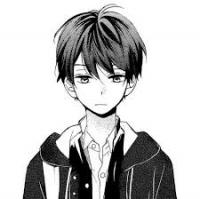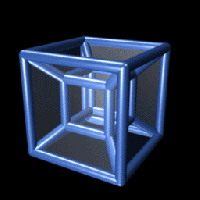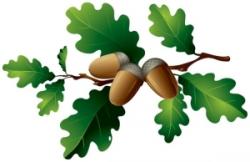0
















| Thumbs Up |
| Received: 2,138 Given: 7 |

also this is long face according to Google
I don't remember any anime character having that face
Sent from my Redmi Y3 using Tapatalk














| Thumbs Up |
| Received: 2,138 Given: 7 |

It just come from racist point of view where people ignore ignore diversity of facial features in Asian but think that white people can have all kind of facial features.
Sent from my Redmi Y3 using Tapatalk














| Thumbs Up |
| Received: 2,138 Given: 7 |

Asian have all kind of face shape and it is extremely common for anime character to have round face especially female character in anime
In fact innocent cute girls in anime usually have round face lol same way cool mysterious guys usually have small eyes
Sent from my Redmi Y3 using Tapatalk














| Thumbs Up |
| Received: 2,138 Given: 7 |

In fact I have seen valorant jett getting accused of looking white despite even having slanted eyes.
Sent from my Redmi Y3 using Tapatalk














| Thumbs Up |
| Received: 2,138 Given: 7 |

Light yagami infact have monolid
Guy as cool as him usually have mongoloid.
Sent from my Redmi Y3 using Tapatalk














| Thumbs Up |
| Received: 2,138 Given: 7 |

Komi is good female example of slanted eyes. Infact male lead had said that he is into hot girl with slanted eyes. I think that author like girls with slanted eyes
Sent from my Redmi Y3 using Tapatalk














| Thumbs Up |
| Received: 2,138 Given: 7 |

Some ai generated art
Look like Japanese singer's/actress
Sent from my Redmi Y3 using Tapatalk













| Thumbs Up |
| Received: 2,701 Given: 6,834 |

MONGOLID (Homo sapiens asiaticus Eickstedt; Mongolian or Yellow raceBlumenbach; excluding Indianids))
One of the major subspecies or races of Homo sapiens; characterized by a generally short stature, a pyknic build and short legs, a flattish face, prominent cheekbones, high orbits, ortho- or mesognathy (the latter often the result of alveolar prognathism), narrow eyes (typically featuring epicanthus, but this is not an exclusive feature), usually snubbed or concave (but also straight and even convex) noses, and full lips. The teeth are characterized by sinodonty. Face and body hair is very weak, and head hair is usually straight, sometimes gently waving, and black to very dark-brown in color. The eyes are dark, and the skin color varies between very light and swarthy. Mongolids are found in Siberia (e.g. Sibirid), Chukotka-Kamchatka, Turkestan, Mongolia (e.g. Tungid), Manchuria, Korea, Japan, China (e.g. Sinid), Tibet, Nepal, the Indian subcontinent, Burma, Indochina (e.g. Paleo-Mongolids, who are at least partially non-Mongolid), Taiwan, the Phillipines, Malaysia, Indonesia, Oceania, Madagascar, North America, South America, and the other surrounding islands of these areas (Indianids, who are diverse, and significantly derived from Asian Mongolids).
ARCTIC MONGOLID (Arctic Race Agassiz or merely Eskimid; Arctid; Borealid)
Mongolid group of Siberia, the Chukotka-Kamchatka region of extreme northeastern Siberia, and most of habitable arctic North America and Greenland. Arctic Mongolids are distinguished a more pyknomorphic and muscular build, less facial flatness, wider mandible, lower frequency of epicanthus, thicker lips, mesognathy, a high and narrow nose, and very coarse hair. Arctic Mongolids comprise Eskimids and Sibirids.
ESKIMID
Arctic Mongolid variety distinguished by greater facial profile, wider lower jaw, lower frequency of epicanthus, thicker lips, mesognathy, very coarse hair, high-rooted and narrow nose, a rather pyknic and massive body build, advanced musculature, and darker skin. Eskimids are found in arctic North America, Greenland, and intermittently in coastal Chukotka-Kamchatka
SIBIRID
Arctic Mongolid stock indigenous to Siberia, and comprising the East-Sibirid and West-Sibirid types.
EAST-SIBIRID (Paleo-Siberian Czekanowski)
Arctic Mongolid variety, distinguished by greater facial profile, wider lower jaw, lower frequency of epicanthus, thicker lips, mesognathy, very coarse hair, high-rooted and narrow nose, very pyknic and massive body build, very advanced musculature, and distinguished especially by white skin. East-Sibirids are found in Chukotka-Kamchatka. Cf. Sibirid, West-Sibirid.
WEST-SIBIRID
Arctic Mongolid variety, characterized by a convex nose, a receding forehead and darker pigmentation as compared to surrounding groups. The West-Sibirid type approached Indianid in several respects. It is found among peoples of West Siberia, e.g. Kets, Mansis, Nenets, Dolgans, and Nganasans. Cf. Sibirid, East-Sibirid.
QIANGID (Tibetid)
The Mongolid subtype of the Tibetans - a blend of mostly Middle-Sinid with Tungid (Kumid subtype) and low-level Europid elements.
NEO-MONGOLID (TEMPERATE ASIATIC RACE Agassiz)
Less frequently used term referring to the northern Sinid and Tungid vareties of Mongolid, as opposed to the Paleo-Mongolids of Southeast Asia. "Neo-Mongolids" retain, to greater extent, the true Mongoloid features attained through cold adaptation in Northeast Asia during the last Ice Age.
SINID
The most numerous of the Mongolid varieties, characterized by a high and narrow skull and face (however the face is lower than that of the Tungid type), mesognathy, a high frequency of epicanthus, coarse and straight black (sometimes blue-black) hair, and darker skin and thicker lips than Tungids. Sinids are found in China, Tibet, and Korea. Subtypes: North-Sinid, Middle-Sinid, South-Sinid.
NORTH-SINID (Hoid Lundman; Nordsinid - German spelling)
Sinid subtype. North-Sinids are characterized by relatively great stature, narrow faces and noses, low cephalic indices, high height-length indices, moderate amounts of subcutaneous fat and relatively light pigmentation. North-Sinids are found in Northern China (Khitaid subtype) and Korea (Chosonid subtype).
KHITAID
North-Sinid subtype of northern China.
CHOSONID
North-Sinid subtype of Korea, distinguished from the Khitaid subtype by a higher cephalic index, larger face, wider nose, and thicker lips.
COSHU TYPE (Cosiu type Saller; Jakunin type)
Mostly North-Sinid blend with Paleo-Mongolid and Ainuid admixture, local to Japan and Korea. It is distinguished by a narrower face and nose (which is often convex), a higher forehead and lower frequency of epicanthus, than the neighboring Sinid populations.
MIDDLE-SINID (Kiangid Lundman; Mittelsinid - German spelling)
Sinid subtype. Really more of a collective term than an actual typological designation, referring to intermediate North- and South-Sinid populations.
SOUTH-SINID (Sudsinid - German spelling)
Sinid subtype. South-Sinids are characterized by wider faces and noses, higher cephalic indices, very high height-length indices, lower fat ratios and medium-short stature.
SHANID
A Paleo-Mongolid and South-Sinid blend, typified by the mostly Burmese Shan.
TUNGID (Kumid Lundman)
One of the two basic Mongolid types of northern Asia, the other being Sinid. The Tungid is characterized by a wide face, high cephalic index, low height-length index, high subcutaneous fat ratios, extreme Mongolid features (with reference to the development of epicanthus, cheekbone morphology etc.) and moderately tall stature. Tungids are found in Siberia, Mongolia, and Turkestan, which are all Altaic-speaking territories. Subtypes: Amur-Sakhalinid, Taigid, Kumid.
AMUR-SAKHALINID
Tungid subtype of the lower Amur river, Sakhalin Island, and the Kuril Islands, typified by the Nivkh (Gilyaks) and related peoples. It is distinguished from other Tungids (e.g. Taigid) by its stronger beard growth and appreciable prognathism. These traits could be indicative of mixture with Ainuids.
BURYAT-MONGOL
In Coon's typology, a brachycephalic Mongolid type with extreme Mongolid features.
KUMID
Tungid subtype of Turkestan and Mongolia and the surrounding regions. Kumids are characterized by a low and wide skull (sometimes higher than with the Taigid subtype), high and wide face with somewhat smaller malars than the Taigid subtype, high frequency of epicanthus (however less so than with the Taigid subtype), and high and often rather large nose, of little projection. The hair is coarse and black, the eyes are dark, the skin is darker than with the Taigid subtype, and beard growth is scant (but stronger than with the Taigid subtype).
TAIGID (Baikal)
Tungid subtype of the Tungus-speaking region of Siberia, between the Yenisei River and Chukotka-Kamchatka, and between the Arctic Ocean and China/Mongolia. Tungids are characterized by short stature, a pyknomorphic build, a maximal Mongolid facial structure, high frequency of epicanthus, a low and wide skull, a very high, wide and flat face, orthognathism, notable forward projection of malars, very little nasal projection, and thin lips. The hair is straight and soft, the eyes and hair are sometimes mixed rather than black, and the skin is very light, sometimes even approaching Northern European standards. Pilous development is scant. A lower-faced south Siberian Taigid subvariety may be distinguished among western Evenks and the Turkic-speaking Tuvans and Tofalars.
PALEO-MONGOLID (Austrid; Tropical Asiatic Race Agassiz; Palaemongolid - German spelling)
Paedomorphic-infantile, predominantly Mongolid type of southeastern Asia. Paleo-Mongolids have absorbed varying amounts of Australid, Veddid and Negritid. They are characterized by small stature, a low and round face, a wide nose, full lips, a receding chin, and a relatively low frequency of epicanthus. Notable subtypes are Nesid and Palaungid.
NESID (Malayid)
Paleo-Mongolid variety of the Southeast Asian islands (as opposed to the mainland; Gr. ??s?? = “island”). Nesids are found throughout the Malay Archipelago. Subtypes: Deutero-Malayid, Proto-Malayid. Cf. Palaungid.
DEUTERO-MALAYID
Nesid subtype (Nesid “proper”), with broader and more pronounced Mongolid features than Proto-Malayid.
PROTO-MALAYID (Dayakid Lundman)
Nesid (Paleo-Mongolid) subtype principally associated with the Dayak people of Borneo. Proto-Malayids are mixed with Veddids, Melanesids and Negritids, and retain less of their Mongolid character than do Deutero-Mongolids.
PALAUNGID
Paleo-Mongolid variety of mainland Southeast Asia. Cf. Nesid.
POLYNESID (Amphinesian Race Huxley; Pacific Race Agassiz)
The primary racial type of the Pacific Islands. Polynesids are tall and robust, with medium-high and slightly angular faces, moderately broad lips and nose, and wide eyelid apertures. The skin is light brown, the hair is wavy and black, and the eyes are dark brown. This type is especially prevalent in Hawaii, Samoa, Tonga, New Zealand, the Society Isles and the Easter Isles. In Micronesia it is strongly mixed with Melanesids and Paleo-Mongolids.
AINUID (Ainoid; Kurilid)
Special type which constitutes a racial substrate in the Japanese population; it is, or rather was, typified by the Ainu people of Hokkaido, South Sakhalin and the Kurile Islands. Ainuids are small-statured and stocky, with broad faces, wide noses, and notable body hair growth. They are sundadonts, and are not considered Mongolid. Their exact affiliation is the subject of much discussion, but the initial suggestion that they are Europids seems to be contradicted by more recent studies which reveal stronger affiliations with the Polynesids of southeast Asia and Polynesia. Cf. Amurian.
AMURIAN
The suggested predecessor to the modern Ainuid type of Japan.














| Thumbs Up |
| Received: 6,485 Given: 6,855 |

I'm not sure but I think this was the point of criticism, that a lot of people when it comes to the term of "Asian" only have Mongolids (and subgroups) in mind and not Asians like Anatolians, Armenians, peninsular Arabs, Iranians, Afghans, Indians, Dravidians, Negritos and Papua.
On the other hand, calling such a simplfication "racist" as Rajutprincess does, seems somewhat arbitrary.
Target: rothaer_scaled
Distance: 1.0091% / 0.01009085
39.8 (Balto-)Slavic
39.0 Germanic
19.2 Celtic-like
1.8 Graeco-Roman
0.2 Finnic-like
There are currently 1 users browsing this thread. (0 members and 1 guests)
Bookmarks